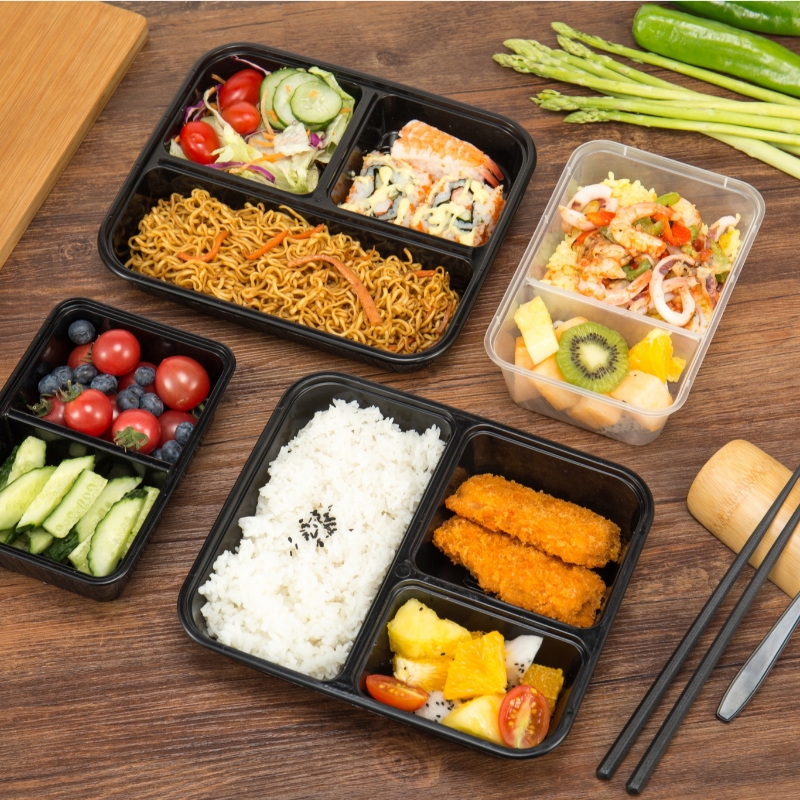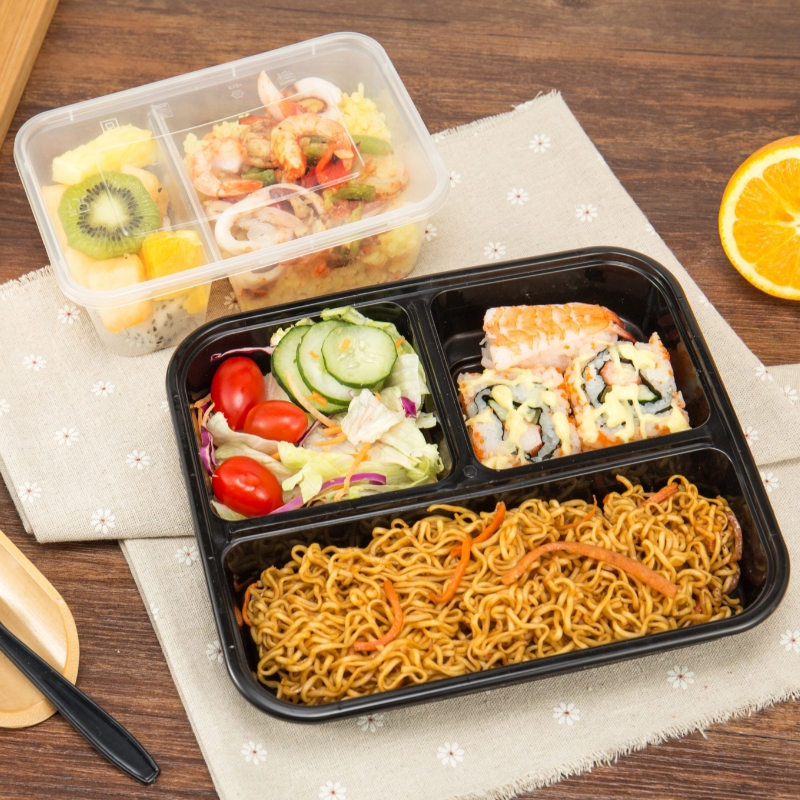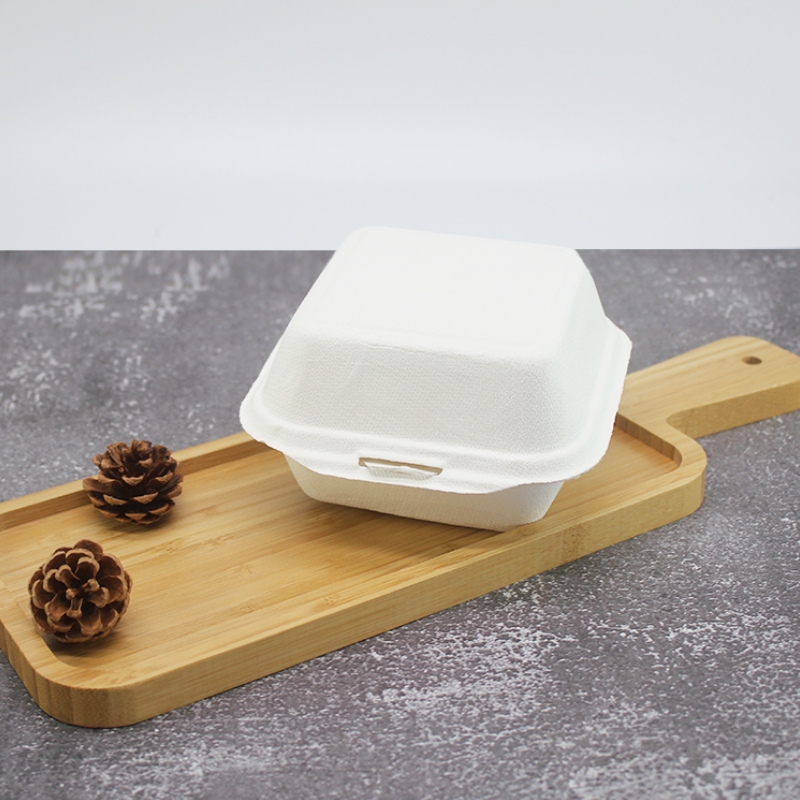With the development of economic life and people's increasingly rich spiritual needs, the diet has taken on a new look in recent years. We struggle with the issue of "eating" every day, shuttling between various ordering platforms, and waiting for a period of time for the takeaway to arrive without going out. Ordering food delivery has become a ubiquitous phenomenon. Do you know the type and difference of the disposable fast food box you got?
According to the big data survey, the fast food boxes currently on the market are roughly divided into disposable plastic packaging boxes, disposable paper lunch boxes, and disposable degradable lunch boxes.
1. Disposable plastic lunch box
Disposable plastic lunch boxes can be divided into foam plastic lunch boxes and PP plastic lunch boxes because of the difference in the addition of main ingredients.
Disposable foamed plastic lunch boxes are made of polystyrene resin. After being heated and melted at high temperature in the extruder, foaming agent (butane) is added to extrude the sheet. After the sheet is rolled up, it is ventilated and humid Put it in a healthy environment and then carry out secondary heating and blister molding to make various lunch boxes. It is widely used because of its advantages of heat preservation, pressure resistance and low cost. But because of the irreversible damage to the environment, the term "white pollution" became a hot topic. The danger of disposable foam lunch boxes is that when the temperature of food stored in foam plastic lunch boxes exceeds 65 degrees, toxic substances such as bisphenol A will be released. Bisphenol A is an organic chemical raw material, which is not easily decomposed by the digestive system and can easily cause physical harm.
The PP plastic lunch box is made of polypropylene. The lunch box made of it has good heat resistance and will not release toxic substances when the temperature of the food is too high. The premise is that the material used is food-grade PP material. If the PP plastic used has a strong smell, it is an inferior product and may be poisonous. The lunch box made of pp material is generally transparent, non-toxic and harmless, and it is often seen on disposable fast food boxes.

2. Disposable cardboard fast food box
The raw materials of
paper lunch boxes are mostly pulp or wood pulp, which need to be pressed and shaped to obtain finished products. The paper lunch box itself has no waterproof and oil-proof function. For example, the kraft cardboard soup barrels and disposable paper cups we often use need to be coated with plastic on the inner wall of the tableware to achieve the effect of no leakage. When the film encounters hot water or hot food, it will release toxic chemical substances, which reduces the use of plastics to a certain extent, but the damage to the human body has not been reduced.
At the same time, most paper lunch boxes use wood pulp. When making paper, trees may be cut down and forests may be destroyed. During the deep processing of wood pulp, a large amount of sewage will also be generated and pollute the environment, which is not in line with the concept of sustainable green development.

3. Biodegradable lunch box
The biggest difference between biodegradable lunch boxes and other fast food boxes is that they can be biodegradable and the materials used can be recycled.
Degradable lunch boxes are also divided into two categories, partially degradable and fully degradable. Partially degraded lunch boxes generally refer to corn starch-based lunch boxes, which are polymers-polylactic acid obtained by chemical methods from corn, cassava, etc. The feature is that it does not contain harmful substances to the human body, is waterproof and oil-proof, and can be partially degraded. Compared with traditional lunch boxes, it is more environmentally friendly. The authenticity of the cornstarch lunch box starts with the color and smell. The white lunch box may have added some additives such as bleach and talcum powder, because the powder lunch box itself is yellow in color and smells like corn plants. fragrance.

Fully degradable lunch boxes generally refer to straw, reed, sugarcane, bamboo, etc., which use plant fibers as raw materials to undergo biochemical reactions under the action of enzymes from microorganisms (bacteria, mold, algae) in the natural environment, causing mildew from appearance to internal quality changes, and finally A lunchbox of carbon dioxide and water is formed. It is easy to use and light in weight. Food-grade waterproof and oil-proof additives are used in deep processing to prevent penetration. In addition to the above characteristics and differences, the cost of degradable lunch boxes is relatively higher. Of course, with the development of the economy and the large demand for environmentally friendly lunch boxes in the future, biodegradable lunch boxes may become the first choice for disposable environmentally friendly tableware.




